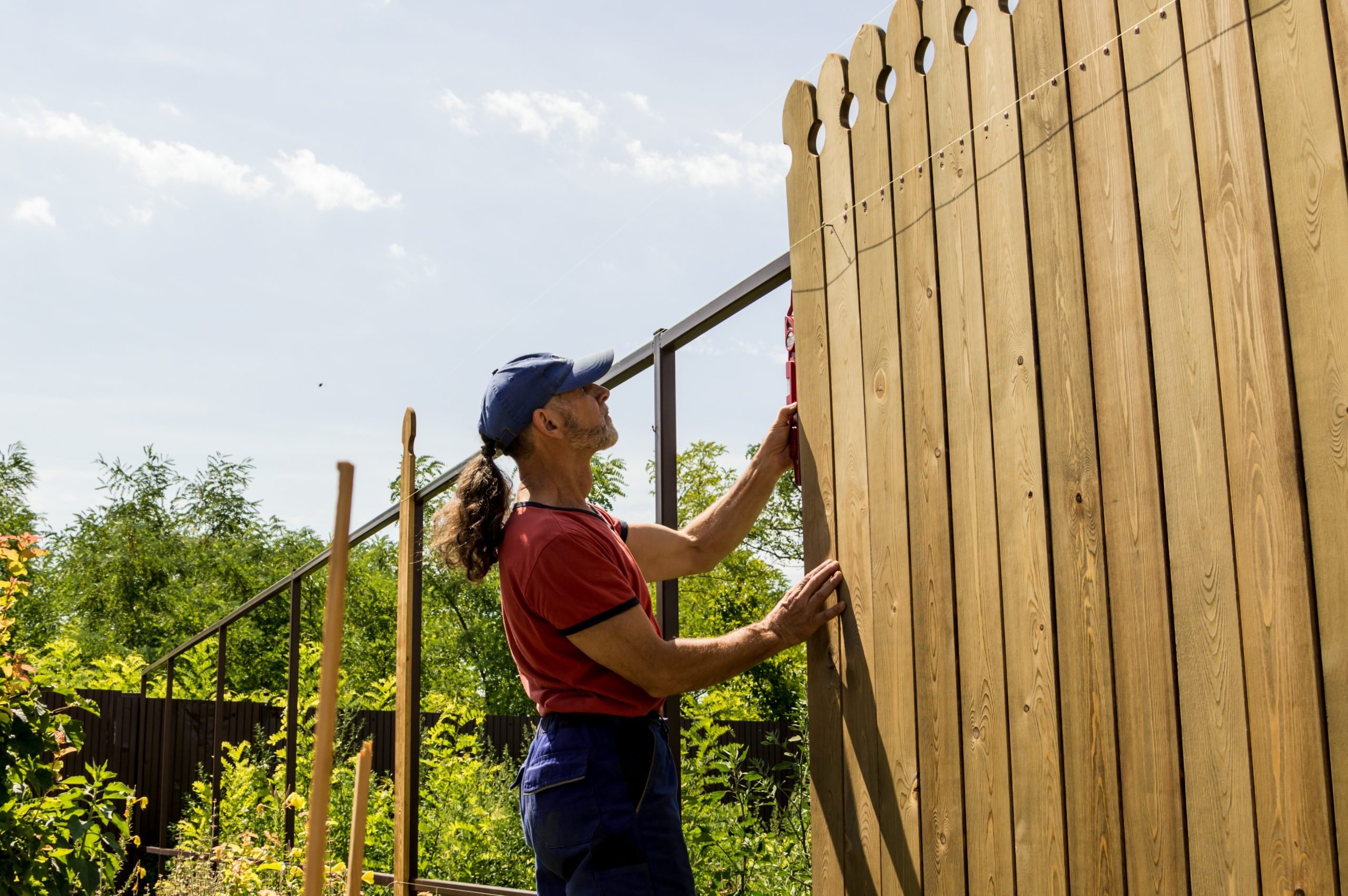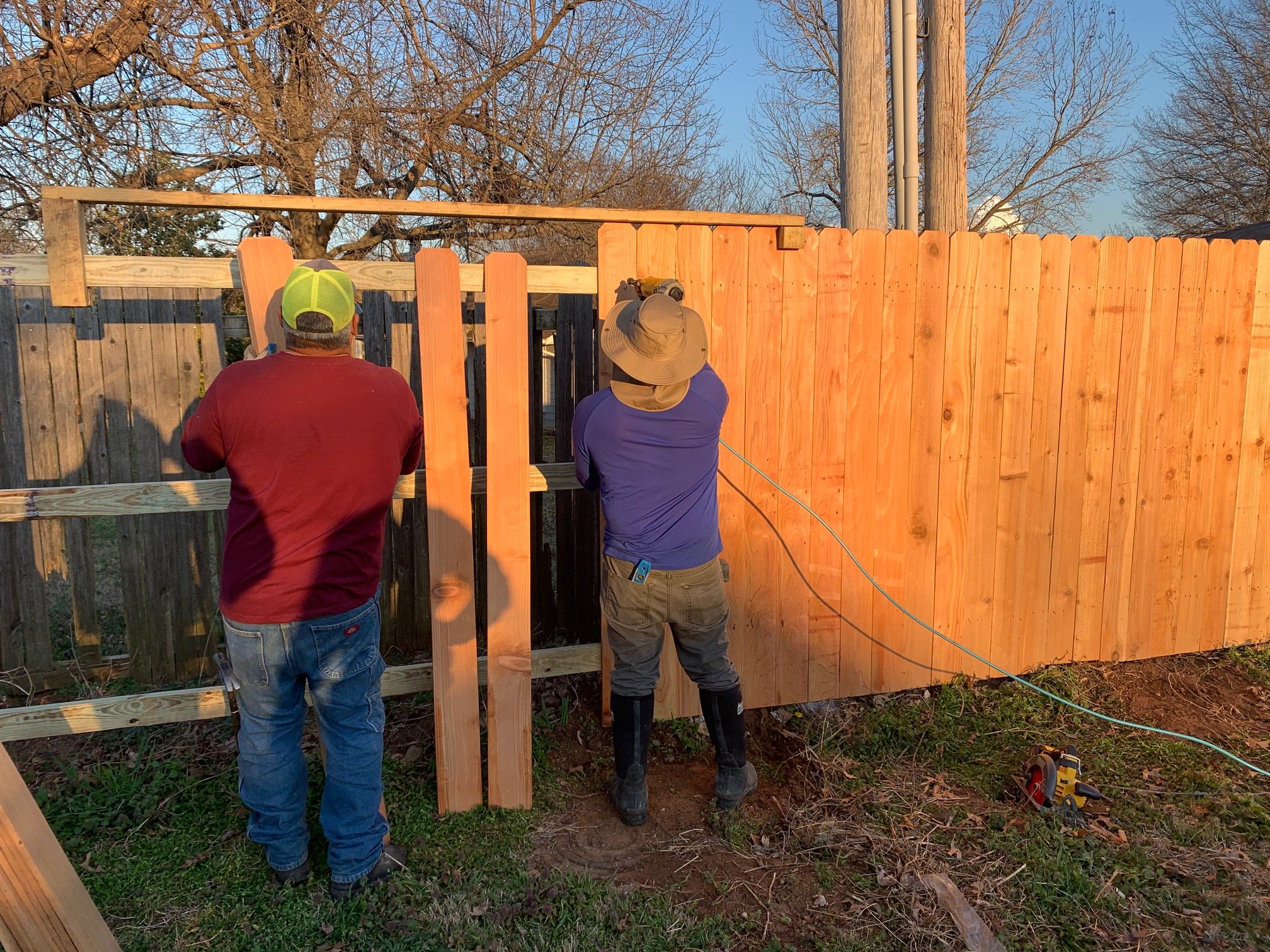The Ultimate Roadmap for a Perfect Installation by gadsden fence company
The Ultimate Roadmap for a Perfect Installation by gadsden fence company
Blog Article
The Ultimate List for Successful Fence Installation Tasks
When you're intending a fence setup task, it's essential to have a clear method in position. Beginning by specifying your function and objectives, whether it's for privacy or safety (Gadsden Alabama Fence Company). Comprehending local regulations can save you time and migraines later on. From there, selecting the ideal products is essential for both toughness and visual appeals. There's even more to take into account before you damage ground. Let's discover the steps that will certainly ensure your job is a success
Define Your Objective and Goals

Research Local Rules and Permits
Exactly how do you assure your fencing setup goes smoothly? Beginning by looking into local regulations and authorizations. Every location has details laws relating to secure fencing-- height, product, and positioning can vary commonly. Get in touch with your regional zoning workplace or building division to recognize what's needed in your neighborhood.You may require a permit before you dig, particularly if you're near property lines or energies. Falling short to abide by laws can cause penalties and even having to remove your fence.Also, think about homeowners organization (HOA) rules if you live in an area with one. They commonly have extra standards that you'll need to adhere to.
Pick the Right Products
When choosing materials for your fencing, consider toughness and exactly how they'll stand up versus the aspects. You'll additionally desire to strike an equilibrium between appearances and functionality to guarantee your fence looks fantastic while offering its objective. Putting in the time to select the best materials can make all the difference in the long life and look of your fencing.
Product Toughness Factors To Consider
As you pick materials for your fencing, it's vital to assess their durability, since different alternatives can greatly impact the longevity and upkeep of your setup. Timber, while aesthetically pleasing, calls for regular treatment to fend off rot and bugs. On the various other hand, vinyl offers impressive resistance to fading and breaking but can be a lot more expensive upfront. Steel fencings, like light weight aluminum or wrought iron, supply toughness and longevity, however they might require periodic rust defense. Consider your local climate as well; extreme climate can affect product performance. Inevitably, choosing the ideal resilient product will save you time and money in the long run, guaranteeing your fencing stands solid versus the components and reduces upkeep initiatives. Select carefully!
Visual and Functional Equilibrium
While you may focus on toughness when choosing fencing products, attaining a visual and useful balance is similarly crucial. Consider just how your choice complements your home's design and the bordering landscape. For example, wood fencings can use appeal but may need even more upkeep, while vinyl gives a smooth, modern-day appearance with less maintenance. Steel fences, like wrought iron, can include elegance and safety and security, but make certain they fit the overall ambiance of your building. Consider color, texture, and design-- these aspects can enhance your curb allure. Always keep your local climate in mind, as it affects material efficiency. Ultimately, pick materials that not only serve their function but also elevate your exterior area's visual appeal.
Strategy Your Fence Style and Format
A solid prepare for your fencing layout and design is vital to ensure an effective setup. Beginning by determining the objective of your fence-- whether it's for personal privacy, security, or visual appeals. Next off, think about the style that matches your home and landscape. You'll want to select materials that fit your budget plan and maintenance preferences.Measure your lawn properly, marking the borders where the fencing will certainly go. Consider the elevation and spacing of the articles, guaranteeing they meet neighborhood policies. Map out a design to envision just how your fence will certainly look, remembering of any kind of inclines or obstacles. Don't fail to remember to make up gates for very easy accessibility. Seek advice from with your next-door neighbors if the fencing impacts shared residential or commercial property lines, advertising goodwill and preventing disputes. By thoroughly preparing your style and format, you set the phase for a smooth installment process and a fence that satisfies your requirements.
Prepare Your Site for Installment
Before you begin mounting your fencing, you need to prepare the website. Clear the location of any challenges, see to it you understand your building lines, and examine regional laws to prevent any kind of difficulties. Taking these actions will certainly set a solid foundation for your fence task.
Clear the Location
Clearing the area is vital for a smooth fence installment. Begin by eliminating any kind of challenges like rocks, debris, or old fence products. This makes it much easier for you and your group to work efficiently. Next off, trim any kind of thick plant life, such as shrubs or tree branches, that could conflict with the installment process. If you have any type of outdoor furniture or decors near the fence line, move those out of the means. This not only prevents damage yet additionally ensures your office is safe. Take a moment to check for any kind of underground utilities. Call your regional utility company if you're not sure. A clear, orderly site establishes the phase for an effective and easy installment.
Situate Residential Property Lines
Determining your residential or commercial property lines is necessary to verify your fencing is their explanation set up properly and legitimately. Begin by assessing your building deed, which commonly includes a survey or map outlining the limits. If you do not have a survey, think about employing a professional property surveyor. They'll mark the specific lines, helping you prevent disagreements with next-door neighbors. As soon as you've established your borders, use risks or flags to describe the location where your fence will certainly go. This visual help not just helps you remain within your restrictions yet likewise offers a clear referral for your installation. Bear in mind, clear property lines can conserve you from prospective lawful concerns and neighborly problems later on, so put in the time to validate accuracy prior to continuing.

Examine Local Regulations
Once you have actually established your home lines, checking regional laws is the following action in preparing your site for setup. Neighborhood laws can determine fence height, products, and even positioning. Start by contacting your local zoning office or seeing their web site to collect necessary info. Be certain to ask concerning authorizations, as several locations require you to acquire one before you start any kind of setup. Likewise, check out any home owner association (HOA) guidelines that might apply in your community. Recognizing these laws upfront can conserve you from potential fines or the requirement to eliminate your fence in the future. Taking these actions guarantees your fencing adheres to local requirements and aids you avoid frustrations down the road.
Install Your Fence Appropriately
When you prepare to mount your fencing, ensuring correct positioning and depth is vital for its long life Check Out Your URL and stability. Start by marking the design with risks and string to visualize the fence line. See to it your articles are spaced evenly, usually 6 to 8 feet apart, relying on your fencing type.Dig post holes at least one-third the length of the articles, and take into consideration much deeper openings for included stability, particularly in windy areas. Usage gravel at the base for drainage and set the articles in concrete, assuring they're level and plumb.While safeguarding the panels, keep them straight and flush with the messages. If you're installing a gate, double-check the dimensions to ensure it turns openly. After everything's in location, step back and verify that your fence looks also and expert. Putting in the time to mount appropriately now will save you migraines later on!
Preserve Your Fencing for Long life
To keep your fence looking fantastic and standing solid for many years, normal upkeep is vital (gadsden fence company). Begin by checking your fencing a minimum of two times a year. Inspect for any kind of signs of damages, such as loosened boards or rusted equipment. If you area concerns, address them quickly to avoid additional deterioration.Cleaning your fencing is just as vital. Get rid of dirt, particles, and mold with a mild soap service and a soft brush. For wooden fences, consider using a sealer or stain every few years to safeguard versus moisture and UV rays.Don' t forget vegetation! Trim any type of plants or hedges that could be raiding your fence, as they can create damage over time.Finally, maintain an eye on the ground around your fencing. Preserve appropriate drainage to stop water pooling, which can compromise the foundation. By following these steps, you'll guarantee your fence continues to be attractive and useful for many years to come
Often Asked Questions
Just how Lengthy Does a Normal Fence Setup Take?
A common fencing installment typically takes one to 3 days, depending upon the dimension and complexity of the project. You ought to consider aspects like weather condition, surface, and the kind of products you're making use of.

Can I Set Up a Fencing on a Slope?
Yes, you can install a fencing on an incline. You'll need to adjust the fence panels to adhere to the terrain, guaranteeing security and appearances. Ensure to plan very carefully to achieve the most effective results.
What Devices Do I Need for Fence Setup?
For fencing setup, you'll require a message hole miner, level, gauging tape, hammer, saw, and a power drill. Don't fail to remember safety gear like gloves and goggles to secure yourself throughout the job.
How Do I Manage Energy Lines Throughout Installment?
Prior to excavating, always call your local energy companies to situate below ground lines. Make use of an energy locator solution, mark the locations plainly, and avoid digging within those areas. It'll keep you risk-free and avoid pricey damages.
What Is the Typical Price of Fencing Setup?
The average cost of fence installment varies commonly, generally ranging from $1,500 to $4,000. Variables like materials, labor, and place influence your total costs, so it's clever to obtain several quotes prior to deciding.
Conclusion
In recap, find out this here by following this ultimate checklist, you can guarantee an effective fencing setup project that fulfills your demands. Defining your goals, understanding regulations, choosing the right materials, and preparing your site are all essential steps. Once your fencing is mounted, continuous maintenance will keep it looking fantastic and operating well for many years to come - fence company gadsden al. With cautious preparation and interest to information, you'll develop a fencing that not only boosts your residential or commercial property yet also offers the privacy and protection you prefer
Report this page